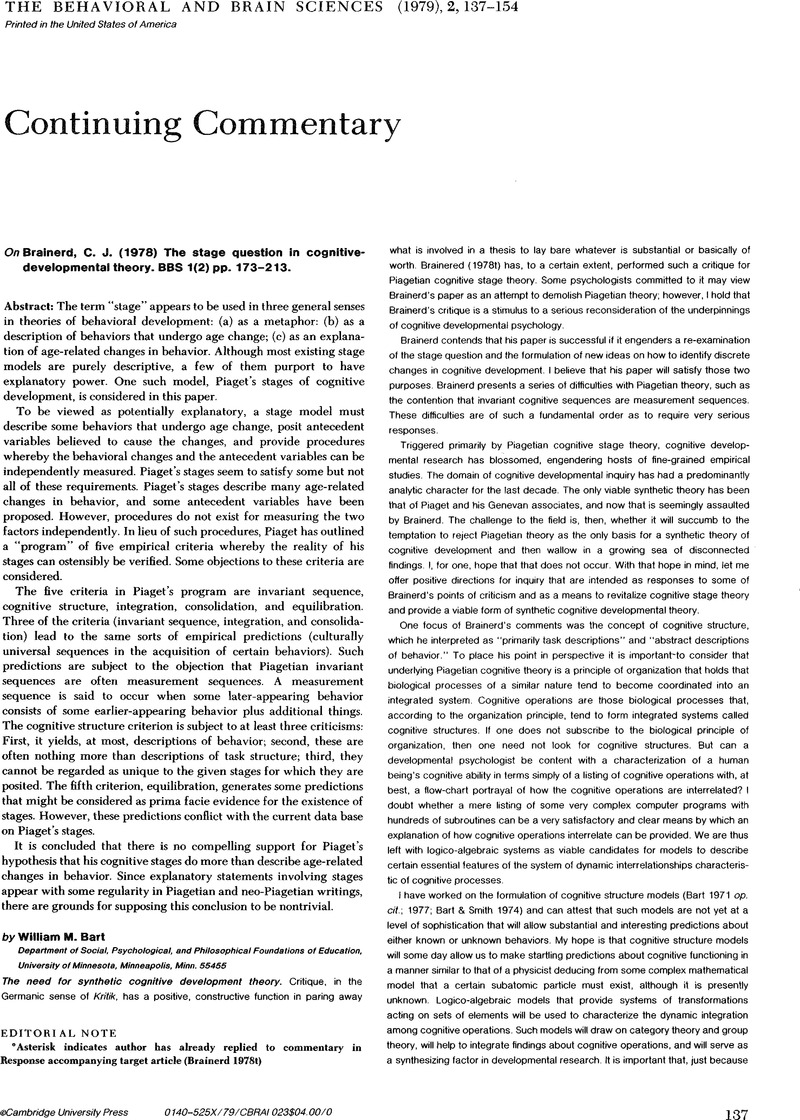Crossref Citations
This article has been cited by the following publications. This list is generated based on data provided by Crossref.
Gallagher, Jeanette McCarthy
1982.
The conservation of conservation.
Developmental Review,
Vol. 2,
Issue. 2,
p.
189.



